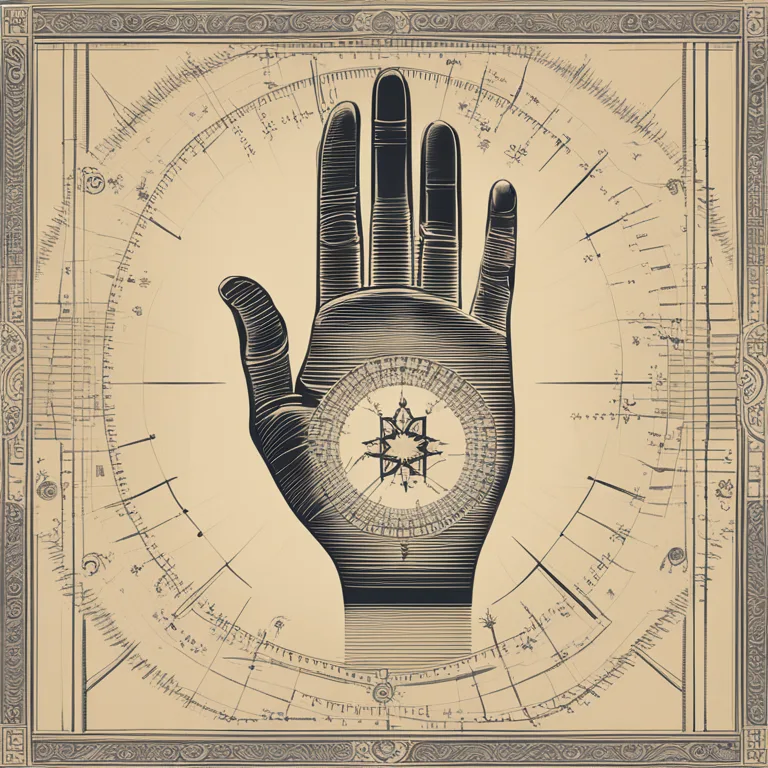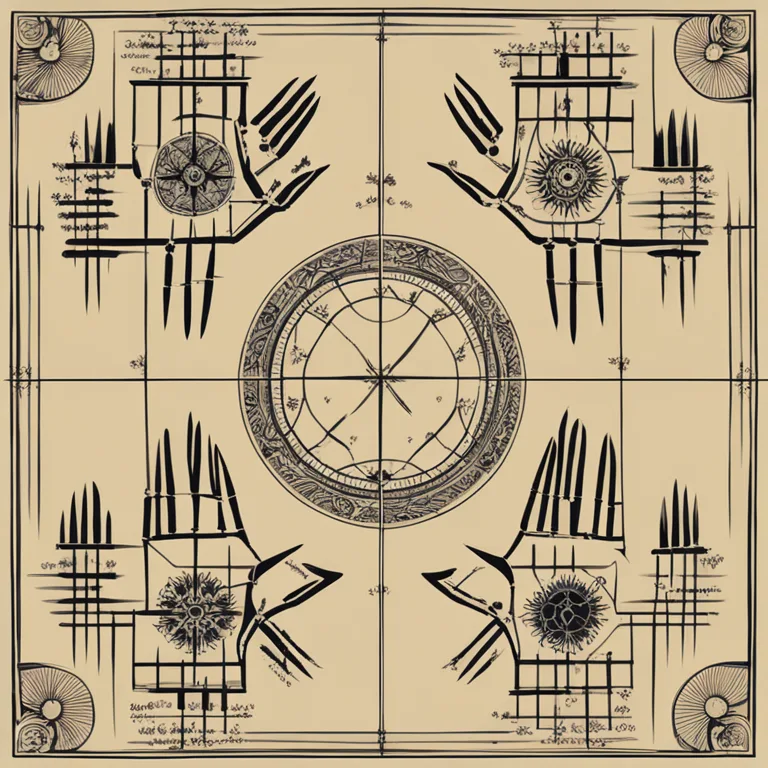
Palmistry Essentials: A Beginner's Guide
Delve into the fundamental principles of palmistry and learn how to interpret the lines and shapes on your palms.
article by Nora Pennington
Introduction to Palmistry
Palmistry, or chiromancy, has been practiced for thousands of years, spanning various cultures and civilizations. It is the art of analyzing an individual's palm to gain insights into their personality and potential life path. Despite advancements in technology and science, palmistry remains a fascinating topic in 2024, blending ancient tradition with modern interest in personal development and self-discovery. In this article, we will cover the basics you need to know to start the journey of reading palms.

The Four Major Lines
A beginner's first task is to recognize the four major lines in palmistry: the heart line, head line, life line, and fate line. Each has its significance: the heart line reflects emotions and relationships; the head line offers insight into your intellect and reasoning abilities; the life line is indicative of vitality and life changes; and the fate line, which is not present on all hands, is related to life's direction and external factors influencing your journey.

Analyzing Hand Shapes
Beyond the lines, the shape of the hand is also a significant aspect of palm reading. The elemental classification of hands - earth, water, fire, and air - corresponds to different personality traits. Earth hands are typically characterized by a square palm and short fingers, suggesting practicality. Water hands have a long palm with long fingers, denoting sensitivity and intuition. Fiery hands boast a square or rectangular palm with short fingers and are a sign of leadership. Air hands, with their square or rectangular palm and long fingers, indicate intellectualism and communication skills.

Interpreting Finger Lengths
The fingers on the palm also play a crucial role in palm reading, with their lengths providing information about an individual's qualities. Long fingers may suggest a detail-oriented personality, while short fingers could indicate an impulsive character. Similarly, the way in which fingers are held together or apart, can indicate sociability or independence, respectively.

Decoding Mounts and Plains
Mounts, the padded areas of the palm, and plains signify various attributes associated with planets. By examining the prominence or flatness of these mounts, a palmist can interpret traits and life experiences. For example, a well-developed mount of Venus, at the thumb's base, can denote a love for life and beauty, whereas a pronounced mount of Jupiter at the base of the index finger can signify leadership and ambition.
The Significance of Minor Lines
Past the primary lines and major features, numerous minor lines can be found on the palm, each adding depth to the reading. These include the marriage line, sun line, and mercury line, among others. Their presence and clarity can provide additional context to individual readings, but interpreting these lines often requires a more nuanced understanding of palmistry.
Final Thoughts and Ethical Considerations
As with any esoteric practice, ethical considerations must be respected. Palmistry should never be used to negatively impact or manipulate individuals. Instead, it can be a tool for reflection and personal insight. Remember, while palmistry offers intriguing possibilities, one's life is not solely determined by the lines on a palm. We are all masters of our destiny, to a large extent, notwithstanding what palmistry might reveal.
Published: 1/3/2024
Modified: 1/3/2024
More predictions
Come back here soon to learn more about yourself and your future


Exploring The Secrets of Palmistry
Delve into the ancient art of palmistry and discover how the lines on your hands can mirror the pathways of your life and fate.


The Mysteries of Palmistry
Delve into the ancient art of palmistry to uncover the secrets held within the lines and features of your hands.


The Art of Palmistry: Lifelines to Fate
Delve into the ancient practice of palmistry and discover how the lines on your palm can reveal insights about your personality, destiny, and love compatibility.